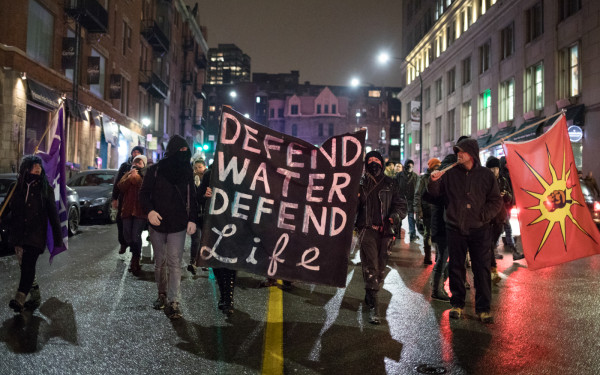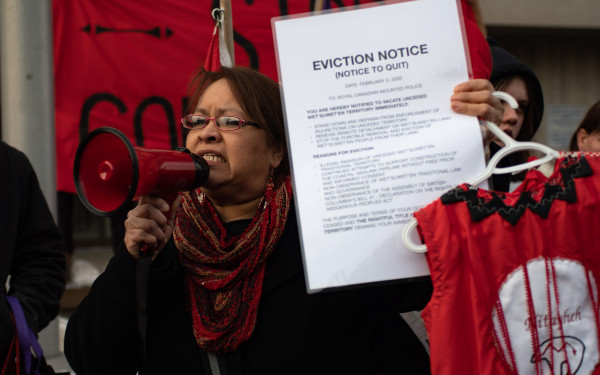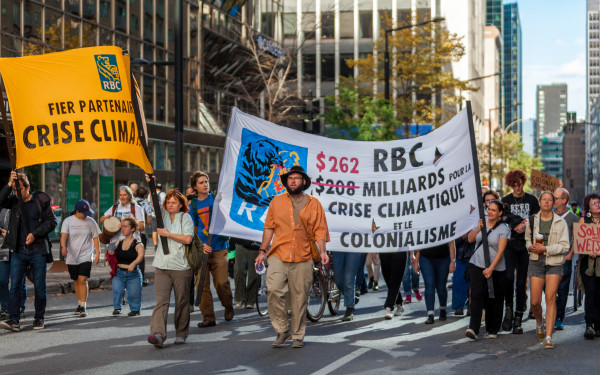Vanessa Gray Calls for Allies Against Pipelines
Defending the Defenders Talk at McGill University Puts Chemical Valley in the Spotlight
Sarnia, Ontario, known as the Chemical Valley, is the hotspot for petro-chemical plants in Canada—with 40 per cent of the Canadian industry located in the area—and it’s endangering the lives of the neighbouring Aamjiwnaang community.
This is the reason why last year on a cold December morning, Vanessa Gray—a prolific activist from the Aamjiwnaang—along with two non-indigenous allies shut off the valve wheel of the Enbridge’s Line 9 pipeline, stopping the oil flow. Line 9 is a controversial Tar Sands pipeline which begins in Sarnia and ends in Montreal’s East End refineries.
“It’s a chemical war zone that we are dealing with in Chemical Valley,” said Gray. “I am a little desperate for change.”
Her sister, Lindsay, joined her when they spoke at McGill University on Tuesday evening for a talk entitled Defending Land Defenders: Solidarity with Vanessa Gray. They both grew up surrounded by the toxins spewing from the refineries that are located near Sarnia, Ontario.
“We are being used like guinea pigs,” said Lindsay Gray. There are 63 refineries within the 50 km radius of the Aamjiwnaang community.
“I believe the Canadian government is responsible for the many deaths in my family due to cancer and the toxins getting us sick,” said Gray. “This is why I want to highlight environmental racism […] It’s actually killing us.”
A local clinic found that in the region, lung-cancer hospitalization rates were 50 per cent higher among males than the provincial average.
Gray said that in her community, 39 per cent of women have experienced stillbirths and miscarriages because of pollutants from the surrounding refineries, as confirmed from the 2004-2005 Aamjiwnaang Health Survey and Body Mapping. Toxins in Chemical Valley are accumulating and there is little knowledge of the effects on people.
“There is no reason to trust Enbridge and the National Energy Board,” said Gray. She continued to explain that the pipelines and refineries were built with money in mind, not the affects that they would have on people.
Enbridge says that the pipeline, which has been running for 40 years, and refineries are safe, despite the objections from the surrounding communities.
Pamphlets distributed at the talk said that the Aamjiwnaang community has taken it upon themselves to report the releases and spills because there is a lack of monitoring by both the companies and the government.
Ecojustice, a Canadian non-profit environmental law group, has estimated that there is nearly 131 million kilograms of pollutants released annually by the refineries in Chemical Valley.
“We don’t live here without a price to pay and that includes living with and in support of our surrounding environment,” said Gray. “We are nothing without our water and without our air.”“A simple solution would be the consultation with First Nation communities on the land,” said Gray.
Instead pipelines are put in with little to no consultation and companies are able to transport their product to both Canada and United States despite the dangers to surrounding communities.
Vanessa Gray is currently facing criminal charges for the incident at Line 9 including mischief and mischief endangering the lives of others. As a result, Gray could face 25 years to life in prison.
Vanessa concluded her speech by stating that the fight would continue for their land and the right to a clean environment.
“It’s our lives that are at stake when it comes to defending our land and water.”

_900_507_90.jpg)
_600_832_s.png)




